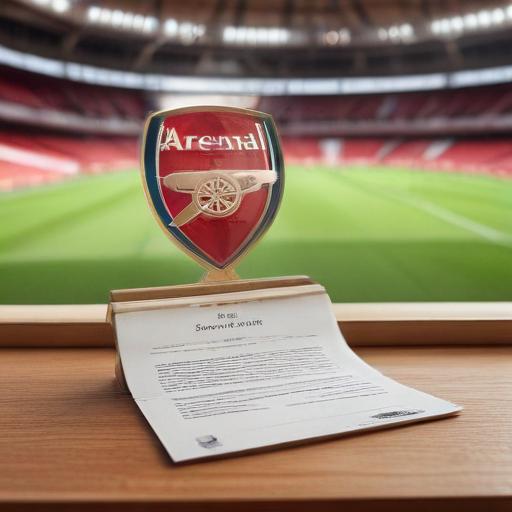It wasn’t a hijack, it was a love story playing out on the pitch and in the boardroom. Eberechi Eze chose Arsenal over Tottenham after a pivotal phone call with Mikel Arteta, a moment that aligned a dream with a club that has long captured his imagination.
The backstory is intricate but clear. Arsenal had explored a deal for the Crystal Palace playmaker as far back as June, and Arteta had spoken to Eze then. By contrast, Tottenham had stepped up their pursuit as the market window opened. Yet Eze’s heart had always leaned toward Arsenal, a club he grew up watching and once cried over when released from their academy at 13. Before any paperwork was signed, he needed a definitive answer from the manager he trusted most.
That answer came in a flurry of decisions that depended on timing. Arsenal, still reeling from Kai Havertz’s knee injury, were actively hunting a solution. They weren’t just chasing a name; they wanted a player who could contribute immediately and also fit into a longer-term plan. A transfer plan accelerated by Havertz’s injury pushed Arsenal to move decisively.
The financials were nuanced. Palace had a release clause that could have seen Eze depart for around £60m plus add-ons, a price Arsenal considered steep for a 27-year-old. Yet the clubs eventually found common ground in a bid around £60m with add-ons, a structure Palace accepted as they weighed multiple interested parties and the chance to engineer a strong finish to the window. Eze’s representatives had already agreed personal terms on a four-year contract with an option for a fifth.
The transfer window’s twists continued to shape the narrative. Arsenal’s own internal drama centered on securing a No 9 and safeguarding Ethan Nwaneri’s future. While talks with Nwaneri offered optimism, Arsenal also studied alternatives such as Morgan Rogers and Morgan Gibbs-White. But the pull of Eze—his audacious talent, goal threat, and creative spark—proved irresistible. For a time, Arsenal were reportedly prepared to step back from Eze if the price proved prohibitive, only to pivot decisively when the moment arrived.
Meanwhile, Spurs’ interest had been building, and they briefly looked close to a deal that would see Eze help bridge the gap caused by Maddison’s ACL injury in pre-season. But as talks wore on, the dispute over structure and the timing of add-ons created friction. The turning point came when Spurs formalized an offer that met Palace’s demands and even allowed Eze to feature in a UEFA Conference League qualifier—only for Palace to pivot once Arsenal moved back into the frame.
Arsenal acted with a sense of urgency and a willingness to spend to fulfil their immediate needs. They also received crucial backing from ownership, with co-chair Josh Kroenke signing off on the plan as Europe’s transfer drama swirled around them. The final outcome mirrored a familiar pattern in this rivalry: Palace profited from the interest of two clubs, while Arsenal extracted a win in the end.
The on-pitch role for Eze is equally telling. He will wear the No 10 shirt and arrive as a Tier 1 addition—an in-form creator with 14 domestic goals and 11 assists for Palace last season. He isn’t a direct Havertz replacement, but his versatility gives Arteta multiple solutions. Early discussions suggested he could operate from the left or behind the striker, freeing Leandro Trossard and potentially even Mikel Merino to cover other positions as needed. His presence, together with Havertz’ injury absence, should help Arsenal maintain attacking momentum and tactical variety.
There is a broader narrative at play. Arsenal have spent close to the £70m mark this window to secure a player they regard as a true match-winner, even as the club has to navigate UEFA squad-cost rules. Eze’s arrival signals ambition and a readiness to pay for quality to sustain a title-chasing push.
In short, Arsenal have brought Eze home. The transfer is as much about the message it sends—an assertion of intent and a belief in higher-quality depth—as it is about the player’s talent. Eze’s confidence, experience at a high level, and England pedigree add a dimension the Gunners have coveted for some time.
What this means for Arsenal and the season ahead:
– A stronger creative spine that can unlock games when Havertz is unavailable or needs support.
– Tactical flexibility to deploy Eze on the left or behind the striker, potentially freeing other attackers to innovate in different roles.
– A candid statement about Arsenal’s willingness to invest in proven Premier League quality, signaling to rivals that the club intends to compete at the top across multiple fronts.
Summary: Eze’s move to Arsenal, driven by a heartfelt connection to the club and reinforced by timely injuries and strategic decisions, marks a decisive step in Arteta’s project. It’s a signing that blends youth and experience, risk and reward, and could reshape Arsenal’s attacking options this season.
Additional comments for the article:
– Include a brief comparison of Eze’s contributions last season (goals and assists) with what Arsenal need this term, to help readers gauge immediate impact.
– Consider a sidebar on Havertz’s injury timeline and how Gyokeres’ arrival provided cover, giving context to Arsenal’s broader plan for the attack.
– A short explainer on the UEFA squad-cost rules mentioned could help readers understand the financial balance Arsenal is managing this summer.
Hopeful note: This transfer positions Arsenal to press forward with a dynamic, technically gifted attack, reflecting both the club’s growth ambitions and Eze’s personal dream fulfilled.
